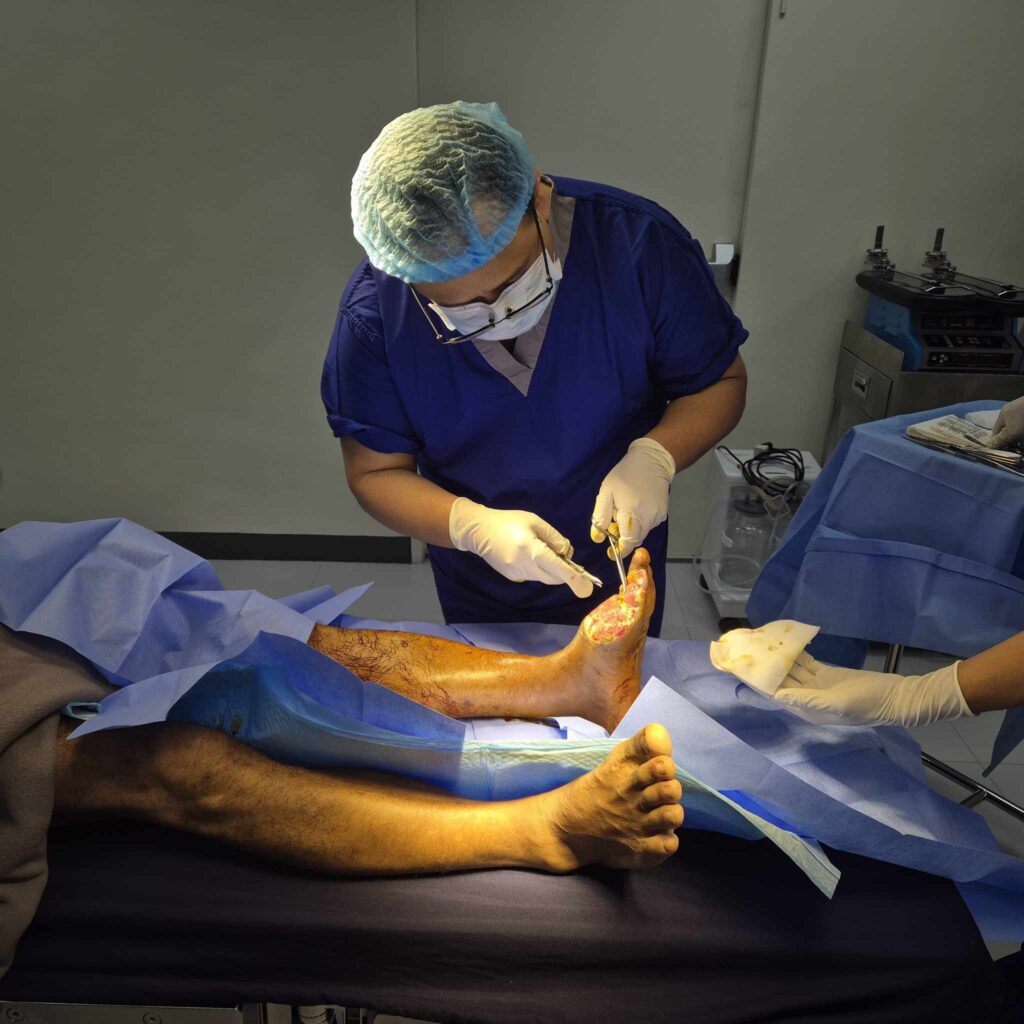Hip pain can dramatically impact daily life, limiting simple activities such as walking, climbing stairs, or enjoying recreational sports. For patients seeking alternatives to total hip replacement, hip resurfacing offers a bone-preserving option that restores mobility and allows a more active lifestyle. Many international patients are now considering hip resurfacing abroad to access high-quality care, advanced surgical techniques, and cost-effective solutions that may not be available or affordable in their home countries.
What is Hip Resurfacing?
Hip resurfacing is a specialized orthopedic procedure designed to relieve hip pain while preserving more of the natural bone compared to traditional hip replacement. Unlike total hip replacement, which removes the entire femoral head and replaces it with an artificial implant, hip resurfacing reshapes and caps the existing femoral head with a smooth metal surface. This approach is ideal for younger, active patients who wish to maintain more natural bone structure and engage in high-impact activities post-surgery.
Candidates for hip resurfacing are typically patients with osteoarthritis, avascular necrosis, or other degenerative hip conditions who are under 60 years old and have healthy bone density. Patients seeking hip resurfacing abroad can benefit from access to advanced surgical techniques and comprehensive care plans tailored to international patients.
Advantages of Hip Resurfacing Abroad
Choosing to undergo hip resurfacing abroad offers several advantages, particularly for patients from countries where the procedure may be prohibitively expensive or involve long wait times. One of the most significant benefits is cost savings. Hip resurfacing packages at international centers, such as those in the Philippines, are typically 50–70% lower than in the USA, UK, Australia, or New Zealand. Despite the lower cost, patients receive world-class care from highly experienced orthopedic surgeons.
Access to advanced surgical techniques, such as the Direct Anterior Approach (DAA), is another key advantage. This minimally invasive approach allows surgeons to access the hip joint from the front, avoiding major muscle detachment, which results in faster recovery, reduced post-surgical pain, and improved joint stability. Patients undergoing hip resurfacing abroad benefit from shorter hospital stays, comprehensive rehabilitation plans, and telemedicine follow-ups to ensure optimal recovery.
International patients also experience shorter scheduling times. Many patients can secure a consultation and schedule surgery within 2–4 weeks, avoiding the prolonged wait times often encountered in their home countries. Beyond medical care, patients enjoy the comfort of a seamless, stress-free healing journey, including assistance with travel arrangements, accommodations, and personalized support from the clinic staff.
Why Choose the Philippines for Hip Resurfacing
The Philippines has emerged as a trusted destination for medical tourism, offering high-quality orthopedic care at affordable prices. Patients seeking hip resurfacing abroad can access experienced surgeons trained in advanced techniques and supported by modern medical facilities equipped with the latest technology.
Filipino healthcare professionals are known for their patient-centered approach and hospitality, ensuring that international patients feel comfortable and supported throughout their journey. The combination of affordability, quality care, and a welcoming environment makes the Philippines an attractive choice for those seeking hip resurfacing abroad.
The Hip Resurfacing Process at Hips and Knees Joint Restoration and Replacement Center
Patients traveling for hip resurfacing abroad can expect a well-structured and supportive care process at the Hips and Knees Joint Restoration and Replacement Center. The journey begins with an initial consultation, which can often be conducted via telemedicine for international patients. During this assessment, the surgical team evaluates the patient’s medical history, imaging studies, and overall health to determine candidacy for hip resurfacing.
Once the surgical plan is finalized, pre-surgery preparations include personalized guidance on diet, exercise, and lifestyle adjustments to optimize recovery. On the day of surgery, the procedure is performed using the Direct Anterior Approach (DAA), a minimally invasive technique that minimizes muscle disruption and facilitates faster healing. Patients benefit from expert surgical care, state-of-the-art implants, and an emphasis on restoring natural joint function.
Post-surgery, patients receive comprehensive rehabilitation plans designed to promote mobility, strength, and independence. Telemedicine follow-ups allow the surgical team to monitor progress, adjust therapy protocols, and provide guidance on safe activity resumption. Comfortable recovery accommodations and attentive staff support make the healing process smoother and more enjoyable for international patients undergoing hip resurfacing abroad.
Real Patient Experiences
Many international patients have successfully regained mobility and improved quality of life through hip resurfacing abroad. One patient from Australia described her experience as life-changing, reporting minimal post-surgical discomfort and a rapid return to daily activities following a Direct Anterior Approach hip resurfacing procedure.
Another patient from the USA highlighted the affordability of the procedure without compromising care quality, emphasizing the professionalism, expertise, and personalized attention she received throughout her journey. These real-life experiences demonstrate the value of choosing trusted international centers for hip resurfacing, where patients benefit from both medical excellence and compassionate support.
Benefits of Choosing Hip Resurfacing Abroad
Patients who opt for hip resurfacing abroad enjoy several key benefits:
- Cost-Effective Care: Significantly lower surgery costs compared to domestic options.
- Access to Advanced Techniques: Minimally invasive approaches like DAA promote faster recovery.
- Comprehensive Aftercare: Tailored rehabilitation programs and telemedicine support.
- Priority Scheduling: Surgery can often be scheduled within weeks rather than months.
- Patient-Centered Experience: Personalized attention, travel assistance, and comfortable accommodations.
These benefits make hip resurfacing abroad an appealing option for international patients seeking both high-quality orthopedic care and affordability.
Takeaway
Choosing hip resurfacing abroad provides a safe, effective, and affordable solution for patients seeking to restore mobility and improve quality of life. With access to advanced surgical techniques, experienced surgeons, comprehensive aftercare, and patient-centered support, international patients can undergo hip resurfacing in a seamless, supportive environment. The Hips and Knees Joint Restoration and Replacement Center in the Philippines stands out as a trusted destination for affordable, high-quality hip resurfacing abroad, enabling patients to reclaim their independence and enjoy life’s simple joys once again.
Frequently Asked Questions
Is hip resurfacing suitable for all patients?
Hip resurfacing is typically recommended for younger, active patients with healthy bone structure. Surgeons assess each patient’s eligibility during the initial consultation.
How much does hip resurfacing cost abroad?
The total cost for hip resurfacing abroad, including surgery, hospitalization, and post-operative care, is usually 50–70% less than in the USA, UK, Australia, or New Zealand.
What surgical techniques are used?
Advanced, minimally invasive methods, particularly the Direct Anterior Approach (DAA), are used to reduce recovery time and post-surgical pain.
How long is the recovery period?
Recovery varies depending on the patient and procedure, but most patients experience significant improvements in mobility within a few weeks, with full recovery typically achieved in a few months.
Can I combine surgery with travel in the Philippines?
Yes, international patients can plan their visit to include recovery in a safe and comfortable environment while enjoying short leisure activities recommended by the medical team.
How soon can I schedule surgery after consultation?
Most international patients can schedule their procedure within 2–4 weeks following their initial assessment, allowing timely access to treatment without extended delays.






